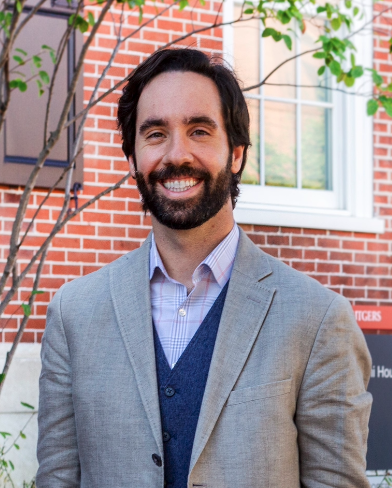
Atul Gupta and Catherine Ishitani Win 2025 NIHCM Research Award
Cited for “Breaking New Ground” in the Field of Hospital Operations
Blog Post


Research has established that people who live in communities with high rates of poverty, unemployment, and other forms of social disinvestment are more likely to suffer from poor mental, physical, and behavioral health outcomes. Furthermore, such socioeconomic disadvantage does not occur at random but rather results from historical and contemporary policies and practices rooted in structural and institutional racism.

Still, while neighborhood socioeconomic disadvantage is an established driver of health inequities, many questions remain. “Less is known about how neighborhood conditions shape functional disability risks among younger people, including children, adolescents, and young adults. This is important from a policy and intervention perspective, as this type of research can inform efforts to prevent the onset of functional impairments,” according to LDI Senior Fellow Courtney Boen.
Boen coauthored a new study, led by Daniel Semenza and published in the Journal of Epidemiology and Community Health, that further explores the connection between health, particularly functional disability, and concentrated disadvantage—which combines many factors including: the percentage of families living below the poverty line; the percentage of the population that is unemployed; and the percentage of female-headed households.
“These three measures are often aligned with one another, and together they tend to predict negative community outcomes related to health, crime, and social disinvestment,” Semenza said.
The investigators examined how neighborhood disadvantage related to functional disability using a longitudinal dataset of almost 16,000 neighborhoods. They used four measures to define functional disability: cognitive disability, such as difficulties concentrating or making decisions; ambulatory disability, such as serious difficulty walking; independent living difficulty, such as challenges with visiting the doctor; and difficulty in self care, including challenges with bathing or dressing oneself.
They found that the relationship varied with age and sex. The link between concentrated neighborhood disadvantage and functional disability was most apparent among male individuals ranging widely in age from 5 to 64 years old.. The link was also apparent among 5-to 17-year-old girls and 35- to 64-year-old women—although at a lower magnitude.
Concentrated disadvantage appeared to result in both higher and earlier risks of functional disability.
To understand these findings, it is important to consider factors that extend beyond community health conditions, Semenza said.
“Structurally disadvantaged communities often have limited access to health care resources like affordable health insurance or preventive health education, making health more challenging for residents with pre-existing conditions,” he said. “At the same time, these communities also have fewer health-promoting spaces like parks, playgrounds, gyms, and grocery stores that contribute to good functional health.”
At the same time, he noted, concentrated disadvantage may increase the risk of harmful neighborhood-level exposures, particularly among boys and young men, such as substance misuse, violence, and contact with the criminal legal system—all of which can harm mental, physical, and behavioral health and threaten everyday well-being.
The study findings indicate that addressing concentrated disadvantage could meaningfully improve health outcomes, particularly regarding functional disability, in the United States. To do so would require not only improving access to high-quality, timely care, but also significant investment to address the historical and contemporary ramifications of structural disparities affecting other areas of people’s lives, including disparities in wealth, resources, and education.
Semenza emphasized the need for strategies that “think about functional health as something holistic that matters for all age groups. Structural inequality in the neighborhoods where we all live plays a critical role in generating health disparities not just in chronic physical outcomes, but also in the everyday experiences of being healthy and living well.”
Programs like the Community Aging in Place-Advancing Better Living for Elders (CAPABLE) that address health factors that contribute to functional disability can be expanded to include younger populations in disadvantaged areas. These programs can address risk factors specific to younger groups, such as substance misuse or violence, as well as expand opportunities for preventive care. But the study findings suggest that such programs alone are not enough: Also needed are policies that increase and better allot resources to address systemic inequities and support well-being among people living in neighborhoods with concentrated disadvantage.
The study, “Concentrated Disadvantage and Functional Disability: A Longitudinal Neighbourhood Analysis in 100 US Cities,” was published in October 2023 in the Journal of Epidemiology and Community Health. Authors include Daniel Semenza, Ian Silver, Richard Stansfield, and Courtney Boen.


Cited for “Breaking New Ground” in the Field of Hospital Operations

Men are Stepping Up at Home, but Caregiving Still Falls On Women and People of Color LDI Fellow Says

More Flexible Methadone Take-Home Policy Improved Patient Autonomy

Penn LDI Seminar Details How Administrative Barriers, Subsidy Rollbacks, and Work Requirements Will Block Life-Saving Care

His data-driven initiatives risk violating consent, spreading stigma, and reviving vaccine misinformation, LDI Fellow writes.

Top Experts Warn of Devastating Impact on Community Safety Efforts